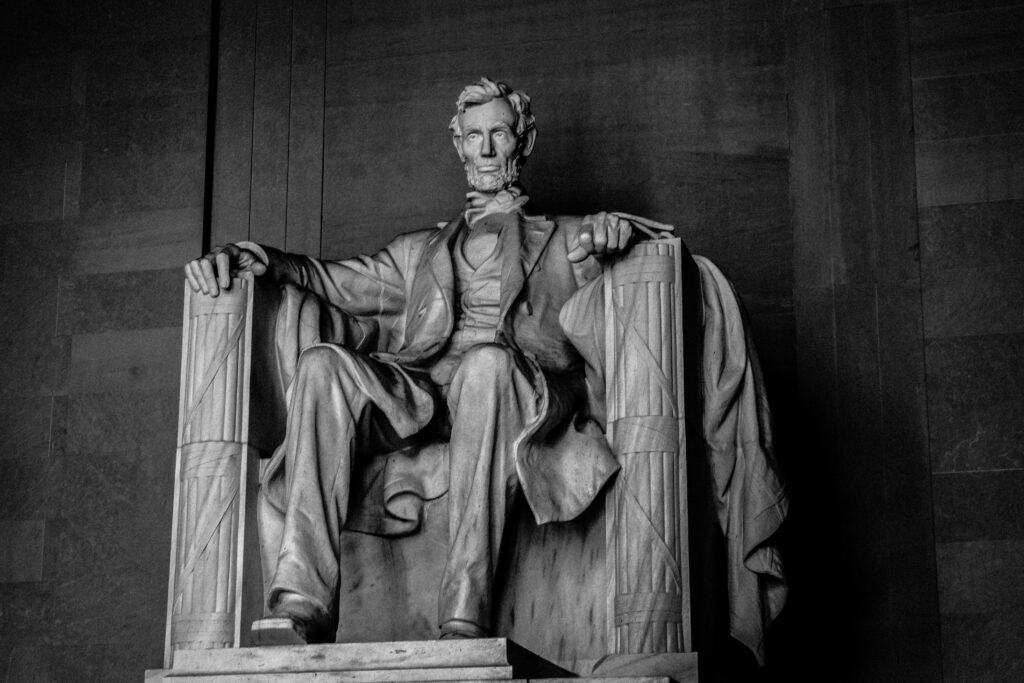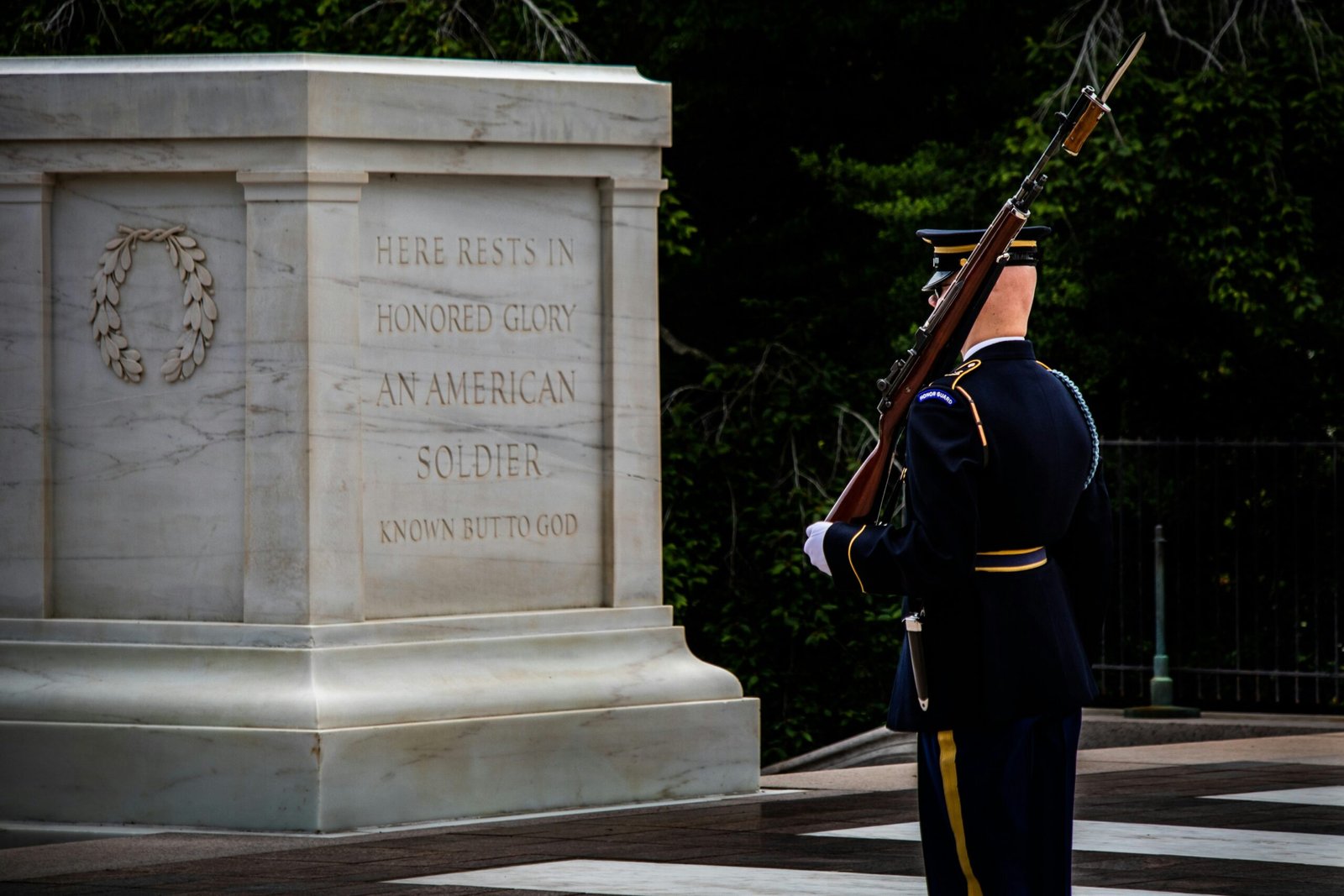Historical Significance of the Lincoln Memorial
It honors Abraham Lincoln and his leadership during a critical time. Built after Lincoln’s assassination in 1865, the memorial reflects his dedication to liberty and equality. Completed in 1922, it recognizes Lincoln’s role in ending slavery and promoting civil rights.
Architect Henry Bacon designed the memorial, drawing inspiration from Greek temples. This classical style symbolizes democracy. Inside, you’ll find a massive seated statue of Lincoln by sculptor Daniel Chester French. The statue shows Lincoln’s strength and determination during his presidency. Surrounding it are inscriptions of two famous speeches: the Gettysburg Address and his Second Inaugural Address. Both speeches highlight unity and freedom, core values of American identity.
The Lincoln Memorial’s location on the National Mall in Washington D.C. is significant. It sits between the Washington Monument and the U.S. Capitol, representing the nation’s ongoing struggle for equality. In 1963, Dr. Martin Luther King Jr. This moment solidified the memorial’s connection to civil rights activism.
The Lincoln Memorial is not just a tribute to a leader. It is a reminder of America’s journey toward freedom and equality, a journey that continues today. Its historical importance goes beyond its physical structure, standing as a testament to the values that define American democracy.
Architectural Design and Features




The Lincoln Memorial in Washington D.C. is a stunning example of neoclassical architecture. Its design, inspired by the ancient Greek Doric Temple, reflects democracy and Lincoln’s role in American history. Built between 1914 and 1922, the memorial uses Colorado Yule marble and Indiana limestone. These materials symbolize permanence and integrity, values that Lincoln embodied.
The structure features 36 columns, each 44 feet tall, representing the 36 states in the Union at the time of Lincoln’s death in 1865. The Doric order, known for its simplicity and strength, was intentionally chosen. The memorial’s grand yet accessible design invites visitors to reflect on Lincoln’s contributions. The wide steps leading to the central chamber create a sense of reverence as visitors approach Lincoln’s statue.
At the heart of the memorial is a massive seated statue of Abraham Lincoln, sculpted by Daniel Chester French. The statue stands 19 feet tall and 19 feet wide, drawing attention to Lincoln’s thoughtful and determined character. Inscriptions of his famous speeches, the Gettysburg Address and the Second Inaugural Address, surround the statue. These words emphasize Lincoln’s dedication to equality and unity.
The Lincoln Memorial’s design and symbolism make it a powerful tribute to a great leader. It not only honors Lincoln but also invites reflection on the lasting principles of democracy.
Cultural Impact and Commemorative Events
The Lincoln Memorial is a key landmark in American culture. It honors President Abraham Lincoln while symbolizing unity and civil rights. Since its dedication in 1922, it has been a gathering place for historic movements, reflecting America’s evolving values. One of the most iconic moments occurred on August 28, 1963, when Martin Luther King Jr. This event cemented the memorial’s role as a beacon of hope and a platform for civil rights advocacy.
Over the years, the Lincoln Memorial has hosted many significant events. These include anti-war protests, civil rights rallies, and even presidential inaugurations. Its steps have become a stage for speeches that unite people around important causes. The memorial, with its grand architecture and iconic statue of Lincoln, remains a symbol of the nation’s ongoing pursuit of justice and equality.
In addition to its historical significance, the Lincoln Memorial hosts annual events, such as Lincoln’s birthday and Martin Luther King Jr. Day commemorations. These events draw large crowds and help keep the memory of the civil rights struggle alive. The memorial also frequently appears in films, documentaries, and literature, continuing to inspire new generations.
The Lincoln Memorial’s enduring legacy reminds Americans of their commitment to freedom, unity, and equality. Its message resonates across time, making it a vital symbol of the nation’s core values.
Visiting the Lincoln Memorial: Tips and Experience
The Lincoln Memorial, a symbol of American history, draws millions of visitors each year. To make the most of your visit, consider a few helpful tips. These times offer cooler weather and fewer crowds, creating a peaceful atmosphere for reflection. Evening visits are especially beautiful as the memorial is illuminated, enhancing its grandeur.
Accessibility is also important. The Lincoln Memorial has ramps and accessible pathways for those with mobility challenges. Information desks and staff are available to assist visitors with special needs. It’s a good idea to check the National Park Service website for updated accessibility information and visitor services.
These tours provide historical insights that enhance your understanding of the memorial’s significance. Many organizations also offer educational resources like brochures and audio guides, which highlight the history and architecture of the site.
As you explore the memorial, you’ll be struck by its size and majesty. The 19-foot-tall seated statue of Lincoln commands attention, reminding visitors of his powerful legacy. Take time to read the inscriptions of Lincoln’s speeches on the walls, which reflect his vision for a united nation. After visiting the memorial, be sure to explore nearby attractions like the Reflecting Pool and the Vietnam Veterans Memorial. These sites complement the experience and offer a broader view of the area’s historical importance.
By following these tips, you can fully appreciate the beauty and significance of the Lincoln Memorial and its surrounding landmarks.









